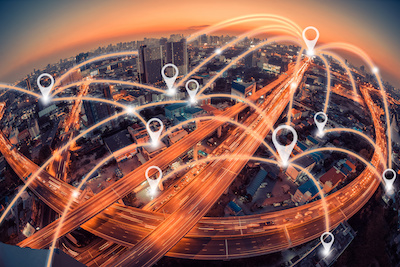Earlier in my career I did quite a bit of work with Cisco Catalyst switches. Lately, I’ve been mostly working with Cisco Nexus products, due to the time I’ve been spending in the data center. I was excited to see Cisco recently refreshed their Catalyst line of switches by introducing the Cisco Catalyst 9000 Series of switches. This prompted me to take a look at the update to the Cisco Catalyst product line, and the new features and functionality Catalyst customers have to look forward to.
The Members of the Cisco Catalyst 9000 Family
The Cisco Catalyst 9000 Series switches come in three main varieties.
- Cisco Catalyst 9300
- Cisco Catalyst 9400
- Cisco Catalyst 9500
The 9300 and 9400 are access series switches, with a key difference. The 9300 switches feature a fixed number of switch ports (48 1G ports, 24 1G ports, or 24 1/2.5/5/10G ports), and the 9400 are modular, with a 7 slot and 10 slot variety.
The 9500, like the 9300, is a fixed port switch. It comes in three different varieties, a 24 port 40G switch, a 12 port 40G switch, and a 40 port 10G switch with 10/40G uplinks. Unlike its counterparts, the 9500 is meant for distribution and core use.
These switches are designed with the latest trends such as IoT and cloud, which is not surprising, since Cisco has been spending quite a lot of time, money, and effort in these areas over the last several years. This is also in line with the rest of their Cisco Live launches.
Cisco’s Digital Network Architecture
Cisco’s Digital Network Architecture, or DNA is all about revolutionizing the network. It is about bringing the power of automation, ease of management, and predictable performance to networks while driving down cost. By driving these things, networks become easier to manage and upgrade across the globe. We’ve seen this trend everywhere lately, vendors using innovative software features to drive environments forward into the future. With products like Cisco DNA Center, gone are the days of painstakingly configuring each and every network device with no other method besides the command line. As we’ve seen, centralized management is key for the IT organizations of the future.
A Major Upgrade
Cisco has overhauled the Cisco Catalyst series switches by putting things like cutting edge CPUs and Memory into the switches. Beyond that, they’ve done little things such as including pre-programmed RFID tags, and make it, well, generally good looking. By partnering with the Italian firm that designs Ferraris, attention to detail was given to to the smallest things like how the handles work and feel. It is clear, Cisco has put an amazing amount of time and effort into the new Cisco Catalyst 9000 Series of switches.
The Cisco Catalyst 9000 Series switches have two available licensing packages: Network Essentials, and Network Advanced. The Network Advantage package adds support for advanced features such as EIGRP, HSRP, IS-IS, Syslog, and SNMP. The Network Advantage package also adds support VRF and MPLS.
Additionally, there are two licensing levels for Cisco DNA, Cisco DNA Essentials, and Cisco DNA Advantage. One key item which comes with the Cisco DNA Essentials license is automation, including day 0 automation. Also included are management features, and key features for troubleshooting such as Wireshark and NetFlow. If features such as encrypted traffic analytics and policy based automation are required, the Cisco DNA Advantage license is needed.
For more detailed information on the Cisco Catalyst 9000 licensing, be sure to take a look at any of the data sheets, such as the Cisco Catalyst 9300 data sheet.
For more information on the Cisco Catalyst 9000 Series switches, and their complementary technologies such as Cisco DNA, be sure to look at Cisco’s FAQ, where you can find additional links.
Check out more information about Cisco here!

